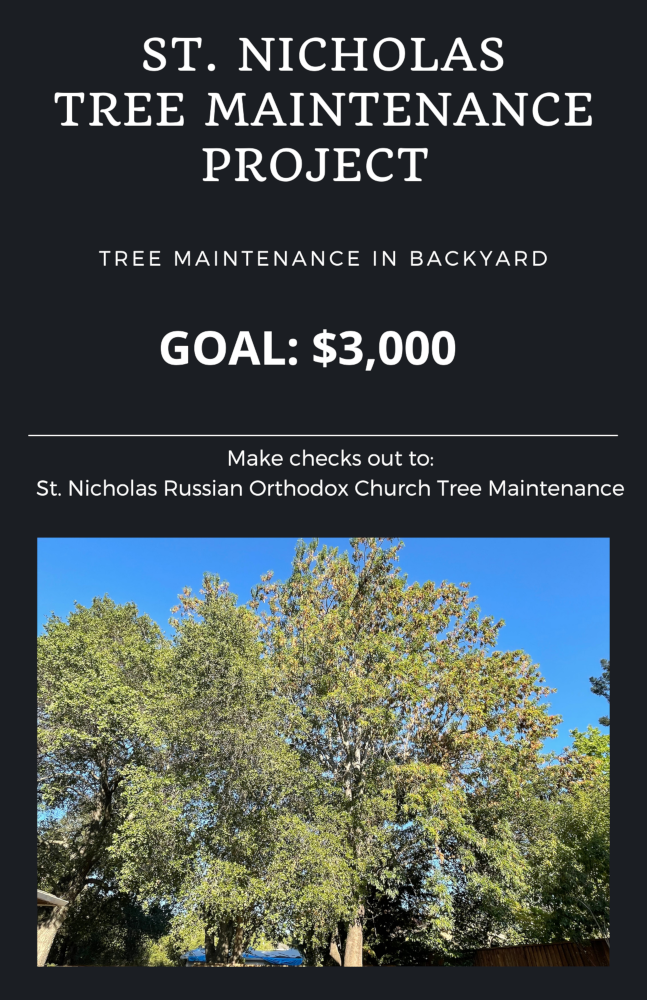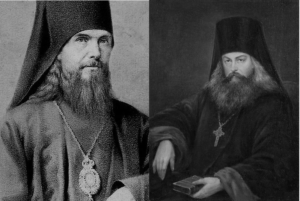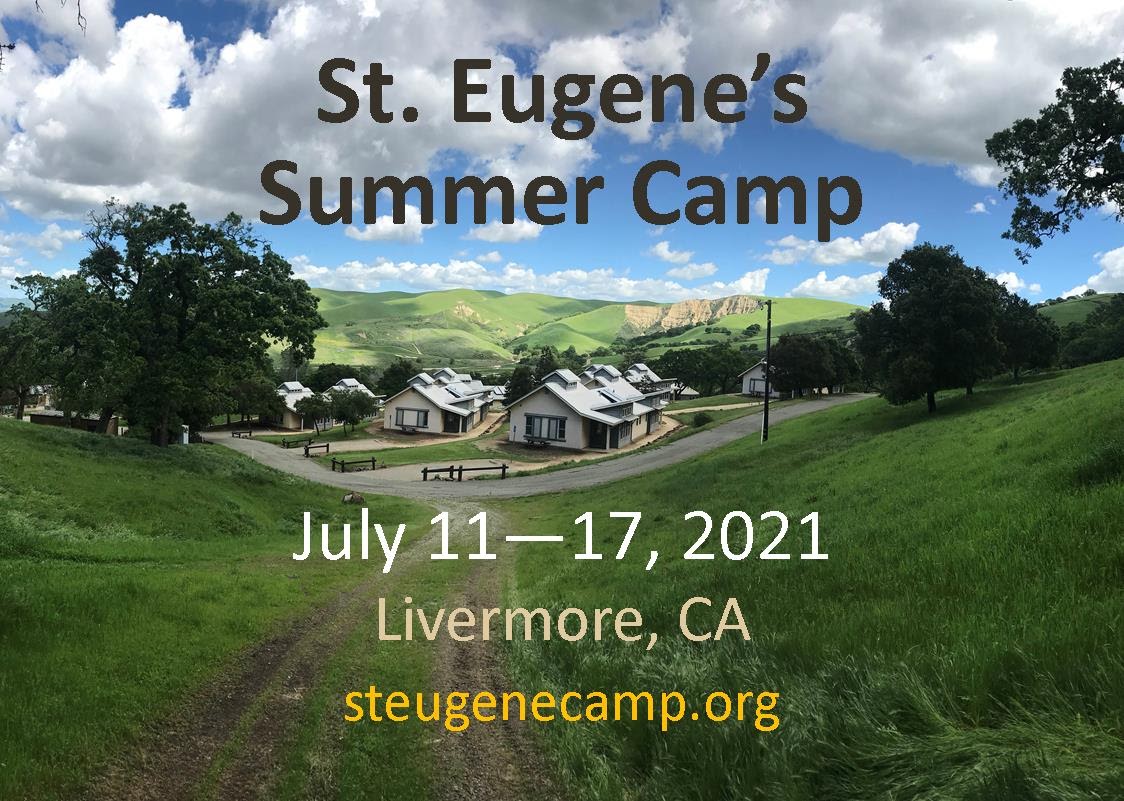
Focus on the Faith: Advent & the Nativity Fast
On November 15, forty days before Christmas, the Church begins to prepare for the Feast of the Nativity of Our Lord. This time of preparation is sometimes called 'Advent,' because advent means the coming or arrival of someone or something. During these forty days, we prepare to celebrate the coming of God's Son, our Lord Jesus Christ, into this world. Jesus came into this world as a little child born as an infant from Mary, His Most-holy mother.
Many faithful people had waited a long time for the coming of Jesus. God had promised to send a Savior to His people, hundreds, and even thousands, of years before Jesus was born on earth. During that long period of time when people were waiting, God spoke to prophets -- holy men and leaders among His people -- and told them how He wanted His people to prepare for the coming of His Son. He told them that they must repent, change their way of life, make peace with one another, care for each other, and be obedient and faithful to God.
Every year, during these forty days, we also wait and prepare for the coming of Jesus. We repent of our bad habits and try to change our way of life. We think about how we have behaved toward other people, and we try harder to be helpful to our friends, our neighbors and members of our family. We also try to be faithful and obedient to God in all that we do. Through fasting and extra effort in prayer, we try to prepare both our bodies and minds to receive Christ into our lives and homes.
Forty days can seem like a very long time to wait for something; it is more than one month, almost six weeks. We know how anxious we are when a birthday or name day approaches; we want to start planning a party and inviting our friends. If we are preparing for someone else's special day, we begin thinking about the kind of gift we wish to give them. As the day draws near, we can hardly wait to begin the celebration. When we stop to think about it, we realize that part of the enjoyment of each celebration is the time we spend getting ready for it and waiting for it. The Church helps us to get ready for the celebration of Jesus' birth. First, the Church issues an announcement, like an invitation, telling us that the Feast of the Nativity is approaching. Then, during the last weeks of November and the beginning of December, there are more announcements made which tell us what to look for as the feast approaches and how to get ready. These are the days on which some of the announcements are made:
November 15 - This is the first day of the Nativity Fast, which begins forty days before Christmas. It is a good day for deciding how we should spend these days of Lent, what we should do to try to improve our way of living, and how we should spend our time in order to allow more time for prayer and preparation for the coming feast. On this day, we might mark the special days on the calendar that lead us to Christmas, or we might begin to make an Advent Calendar or make an Advent Wreath
November 21 - This day is a major feast which commemorates the Entrance of the Virgin into the Temple. It is a feast that honors Jesus' mother, the Theotokos and Ever-virgin Mary, and it marks the first announcement that is given in the Church of the coming of Jesus. During the Matins service, the words, 'Christ is born! Glorify Him!" are sung for the first time. They will be sung at every Sunday Matins until Christmas.
November 30 - The last day of November is the feast of St. Andrew the Apostle. During the services commemorating the life of St. Andrew, the Church adds two more hymns which tell us what will happen on the day of Jesus' birth.
December 6 - This day is dedicated to the memory of St. Nicholas the Wonderworker. The life of St. Nicholas is a good example for us to follow if we want to learn how to care for and help one another. In the services on this day, we hear another hymn which tells us how the whole earth prepares to glorify the birth of Jesus.
The Two Sundays Before the Nativity of Christ (Christmas)
The first of these days is called the Sunday of the Forefathers. The verses from the services on this day tell us how the people of the Old Testament prepared for the coming of the Savior. The Sunday before Christmas is the Sunday of the Fathers. The services repeat some of the same hymns that were sung on the Sunday of the Forefathers. The Gospel lesson read on this day lists all the generations of the ancestors of Jesus who lived on earth.
From the Holy Fathers and Mothers
“As Moses lifted up the serpent in the wilderness, so must the Son of Man be lifted up” (John 3:14). And just exactly as all who were bitten by the serpents looked upon the bronze serpent which was suspended and were healed, thus also every Christian who believes in our Christ and has recourse to His life-bearing wounds… is cured of the bites of the spiritual serpent of sin and by this most holy nourishment is made to live unto the renewal of a new creation, that is, new life in harmony with His life-giving commandments. (Elder Ephraim of Arizona)
“Upon Mount Tabor, Jesus revealed to his disciples a heavenly mystery. While living among them he had spoken of the kingdom and of his second coming in glory, but to banish from their hearts any possible doubt concerning the kingdom, and to confirm their faith in what lay in the future by its prefiguration in the present, he gave them on Mount Tabor a wonderful vision of his glory, a foreshadowing of the kingdom of heaven.” (St. Anastasios of Sinai)
"I cannot describe to you how much our Panagia likes chastity and purity. Since she is the only pure Virgin, she wants and loves everyone to be like that. As soon as we cry out to her, she rushes to our help. You don't even finish saying, 'All-holy Theotokos, help me' and at once, like lightning, she shines through the nous and fills the heart with illumination. She draws the nous to prayer and the heart to Love." (Elder Joseph the Hesychast)
November Saints & Feasts
November 1 - Holy and Wonderworking Unmercenaries Cosmas and Damian of Asia (3rd c.)
Three pairs of Unmercenary Physicians (Anargyri) named Cosmas and Damian are commemorated (November 1, on October 17, and on July 1); The two commemorated today lived near Ephesus in Asia. They were of noble birth and well-educated in all the branches of higher learning; but they turned away from worldly knowledge to practice medicine without charge for anyone who sought their help, caring for the rich as well as poor, and even for animals. They used none of the secular tools of medicine, but relied only on the Name of Christ, by which they were enabled to perform countless healings. Both reposed in peace.
November 9 - St. Nektarios
† Our Father among the Saints Nektarios, bishop of Pentapolis, Wonderworker, and founder of the Monastery of the Holy Trinity on Aegina (1920). Saint Nektarios was born in Selyvria of Thrace on October 11, 1846. After putting himself through school in Constantinople with much hard labour, he became a monk on Chios in 1876, receiving the monastic name of Lazarus; because of his virtue, a year later he was ordained deacon, receiving the new name of Nektarios. Under the patronage of Patriarch Sophronius of Alexandria, Nektarios went to Athens to study in 1882; completing his theological studies in 1885, he went to Alexandria, where Patriarch Sophronius ordained him priest on March 23, 1886 in the Cathedral of Saint Sabbas, and in August of the same year, in the Church of Saint Nicholas in Cairo, made him Archimandrite. Archimandrite Nektarios showed much zeal both for preaching the word of God, and for the beauty of God's house. He greatly beautified the Church of Saint Nicholas in Cairo, and years later, when Nektarios was in Athens, Saint Nicholas appeared to him in a dream, embracing him and telling him he was going to exalt him very high.
"On January 15, 1889, in the same Church of Saint Nicholas, Nektarios was consecrated Metropolitan of Pentapolis in eastern Libya, which was under the jurisdiction of Alexandria. Although Nektarios' swift ascent through the degrees of ecclesiastical office did not affect his modesty and childlike innocence, it aroused the envy of lesser men, who convinced the elderly Sophronius that Nektarios had it in his heart to become Patriarch. Since the people loved Nektarios, the Patriarch was troubled by the slanders. On May 3, 1890, Sophronius relieved Metropolitan Nektarios of his duties; in July of the same year, he commanded Nektarios to leave Egypt.
"Without seeking to avenge or even to defend himself, the innocent Metropolitan left for Athens, where he found that accusations of immorality had arrived before him. Because his good name had been soiled, he was unable to find a position worthy of a bishop, and in February of 1891 accepted the position of provincial preacher in Euboia; then, in 1894, he was appointed dean of the Rizarios Ecclesiastical School in Athens. Through his eloquent sermons, his tireless labours to educate men for the priesthood, his generous almsgiving despite his own poverty, and the holiness, meekness, and fatherly love that were manifest in him, he became a shining light and a spiritual guide to many. At the request of certain pious women, in 1904 he began the building of his convent of the Holy Trinity on the island of Aegina while yet dean of the Rizarios School; finding later that his presence there was needed, he took up his residence on Aegina in 1908, where he spent the last years of his life, devoting himself to the direction of his convent and to very intense prayer; he was sometimes seen lifted above the ground while rapt in prayer. He became the protector of all Aegina, through his prayers delivering the island from drought, healing the sick, and casting out demons. Here also he endured wicked slanders with singular patience, forgiving his false accusers and not seeking to avenge himself. Although he had already worked wonders in life, an innumerable multitude of miracles have been wrought after his repose in 1920 through his holy relics, which for many years remained incorrupt. There is hardly a malady that has not been cured through his prayers; but Saint Nektarios is especially renowned for his healings of cancer for sufferers in all parts of the world." (Great Horologion)
Upcoming Events
Upcoming events this month are in the attached PDF calendar (Events are subject to change! see the online calendar for updates or the attached PDF for more info).





